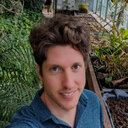
Tommaso MoriUniversity of Florence | UNIFI
Tommaso Mori
Ph.D. (Dr. rer. nat)
About
15
Publications
4,016
Reads
How we measure 'reads'
A 'read' is counted each time someone views a publication summary (such as the title, abstract, and list of authors), clicks on a figure, or views or downloads the full-text. Learn more
52
Citations
Publications
Publications (15)
Objectives
A prevailing hypothesis in paleoanthropology is that early Pleistocene hominin bones were accumulated in South African caves by carnivores, which used those shelters, and the trees surrounding them, as refuge and feeding sites. We tested this hypothesis at the site of Drimolen, by comparing its hominin age‐at‐death distribution to that o...
Objective:
This study aims to develop a comparative basis for assessing the developmental stage of KNM-ER 42700 based on the ontogenetic pattern of the ectocranial surface of the basicranium in modern humans and chimpanzees.
Materials and methods:
A total of 33 landmarks were collected from an ontogenetic sample of modern humans (80), chimpanzee...
KNM-OG 45500 is a hominin fossil composed of parts of a frontal bone, left temporal bone, and cranial vault pieces. Since its discovery along the Olorgesailie Formation (Kenya) in 2003, it has been associated with the Homo erectus hypodigm. The specimen, derived from a geological context dated to ca. 900 Ka BP, has been described as a very small in...
The peopling of Europe during the Middle Pleistocene is a debated topic among paleoanthropologists. Some authors suggest the coexistence of multiple human lineages in this period, while others propose a single evolving lineage from Homo heidelbergensis to Homo neanderthalensis. The recent reassessment of the stratigraphy at the Sedia del Diavolo (S...
The Kocabaş specimen comes from a travertine quarry near the homonymous village in the Denizli basin (Turkey). The specimen comprises three main fragments: portions of the right and left parietal and left and right parts of the frontal bone. The fossil was assumed to belong to the Homo erectus s.l. hypodigm by some authors, whereas others see simil...
Research on Ancient Egyptian animal mummies has grown in significance over past decades thanks to the accessibility of new medical imaging technology. In particular, computed tomography (CT) has shown an important role, allowing to find out the secrets hidden underneath the bandages of the mummies. The aim of this paper is to show the importance of...
Human remains can tell us the story of single individuals as well as entire populations, and they can be informative on cultural practices. Thus, they are part of our cultural heritage. The management of human remains as cultural heritage must consider the needs of preservation, research, and dissemination. The use of 3D technologies provides advan...
Abstract:Human skeletal remains are an immense source of data to describe human biodiversity with an intrinsic complexity due to the multifactorial origin of human variability. Evolution and ontogeny produced complex patterns of variation through contingent events and adaptations. Multivariate approaches have been widely adopted in physical anthrop...
Artificial cranial modification (ACM) and trepanation are medical treatments with a long history
in many human societies. Here, we present data on ACM and trepanation in pre-Hispanic Peruvian populations
from the collections housed at the Museum of Anthropology and Ethnology, University of Florence,
Italy. The Museum has a rich and important collec...
In bioarchaeological studies dental root exposure is often used as a marker of periodontal disease; these studies are based on classical methods assuming alveolar resorption as the only (or the main) cause of root exposure. However, several papers suggested that root exposure depends not only on alveolar resorption, but also on other mechanisms. Co...
Objectives
Palate morphology is constantly changing throughout an individual's lifespan, yet its asymmetry during growth is still little understood. In this research, we focus on the study of palate morphology by using 3D geometric morphometric approaches to observe changes at different stages of life, and to quantify the impact of directional and...
ANTINT (Anthropology Integrated) is a research project which started in 2020 and was funded for two years. Two young postdoctoral researchers are currently working in collaborative projects involving both the Museum of Anthropology and Ethnology and the Biology Department of the University of Florence. The goal of this project is to study the anthr...
The Museum of Anthropology and Ethnology in Florence preserves an extraordinary heritage of 591 plaster face masks made by various scientific explorers and anthropologists during their travels to distant lands with the aim of representing and studying human diversity in the different continents. These collections are linked to the names of Otto Fin...

































































